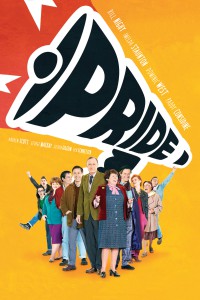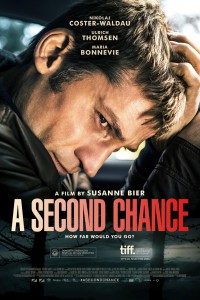Overview
Failed architect, engineer and vicious murderer Jack tells Verge the details of some of his most elaborately orchestrated crimes, each of them a towering piece of art that defines his life's work as a serial killer for twelve years.
Lars von Trier’s latest film takes inspiration from the titular nursery rhyme. The phrase ‘The House That Jack Built’ can have a few different meanings – it is often used as shorthand for a shoddy project or build, and it can also refer to a never-ending endeavour with constant add-ons, often in repeating patterns. Von Trier’s film combines both: it is a shoddy project resulting in two and a half hours of a seemingly never-ending, repetitive tale that fails to excite or even shock.
The film is divided up in 5 ‘incidents’. Jack (Matt Dillon) is planning to build his dream house on a hill overlooking a lake. One day while driving along he is stopped by a woman (Uma Thurman) with car trouble who asks him for help – her jack is broken so she can’t replace her tire. She is very persistent and Jack takes her to a blacksmith to get the jack fixed. As they drive there, the woman repeatedly jokes about how he could be a serial killer and she shouldn’t be getting in a car with a stranger. Jack can only agree. As he takes her back to her car and then back to the blacksmith for a second time, the woman each time becomes more obnoxious in taking pleasure in getting Jack to do what she wants. At some point enough is enough for Jack and he smashes her face in with the jack. And so story of Jack the serial killer begins.
We go through four more ‘incidents’ where Jack takes pleasure in his next kills. Along the way, Jack tells his tale to Verge (Bruno Ganz) and they monotonously discuss details, as Jack repeatedly tears down his house by the lake to make a fresh start. In the meantime the body count steadily increases via ever more inhumane killings as Jack experiments with stranglings, taxidermy, shootings and more.
As a Von Trier film, you know up front you are not in for a pleasant experience. Unfortunately this one isn’t unpleasant in an uncomfortable or challenging way, this one is unpleasant in its pointless monotony and pretentiousness.
Matt Dillon is excellent in the role of Jack, and he carries the role and the movie with ease. But even a great performance cannot make a poor movie into a good one. There is no tension whatsoever – the killings just happen and become more axiomatic with each murder. The voice-over conversation between Jack and Verge drones on, monotonously and pointlessly, the entire movie, leading up to a finale that can only make you roll your eyes.
Along the way, Von Trier seems to have a heavy chip on his shoulder from having been banned from Cannes years ago for expressing Hitler sympathies. If you didn’t know about this, there is no logic at all as to why we get nazi symbolism randomly thrown into the movie, and most likely it is also the reason he picked Bruno Ganz for the guiding role of Verge – Ganz played Hitler in the critically acclaimed ‘Downfall’ (Der Untergang), so he gets two for the price of one: Hitler dressed up as Virgil the Tour Guide from Dante’s Divine Comedy accompanying Jack on the way to Hell. Another lingering accusation Von Trier has had to bear is that of sexual harassment and misogyny; in this movie, Von Trier clearly has no intent to make amends as no female even is worthy enough to get a name; even Uma Thurman’s opening role is listed as ‘Lady 1’.
But alas these titbits of movie trivia don’t make for a better experience – they only provide supporting evidence of a floundering director who, despite 151 minutes of trying too hard, fails to provoke.
★½











